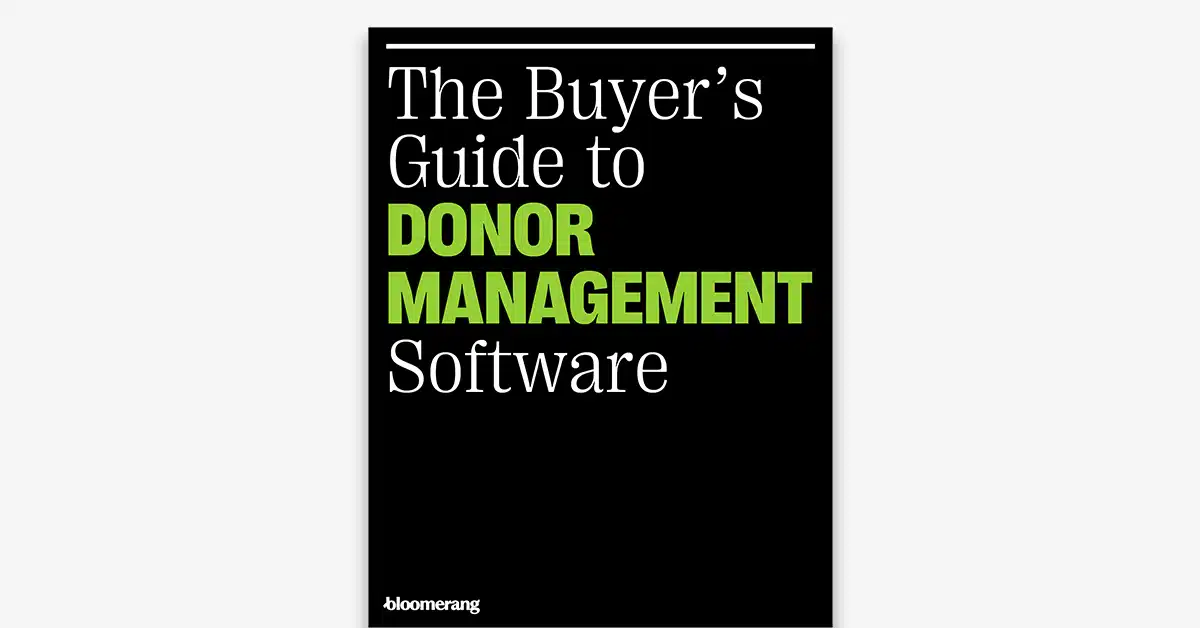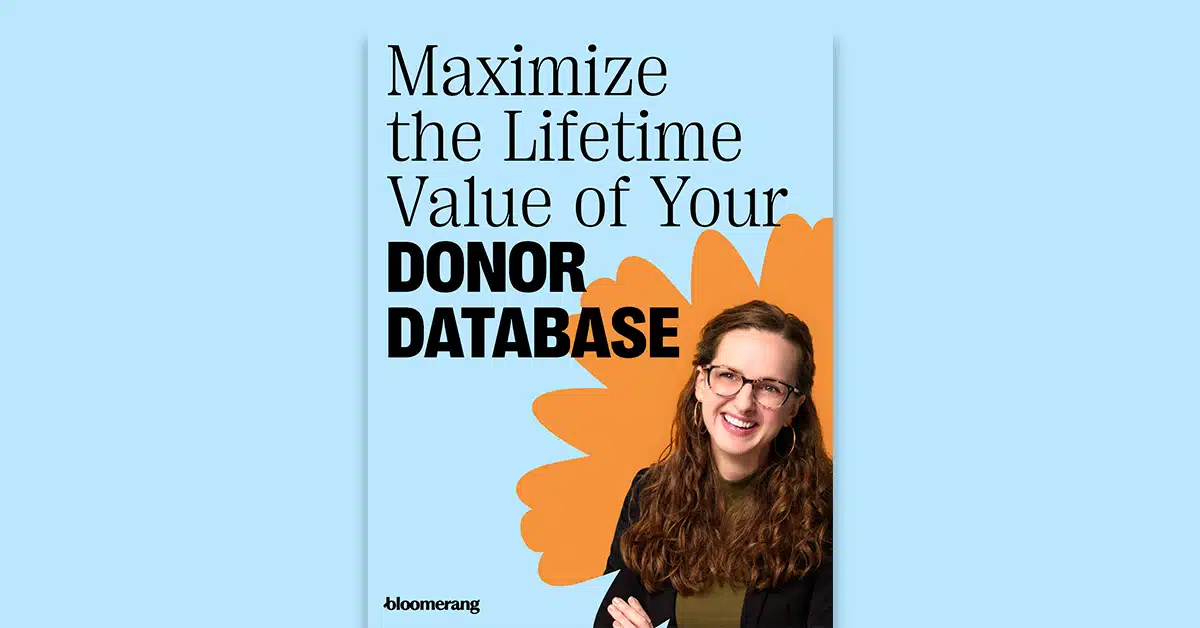

Experienced fundraisers know that donor objections are part of the ask process, which is why they embrace them. There are dozens of reasons why donors throw caution signs that feel like red lights. What follows is a high-level primer that unpacks why donors hesitate, paired with clear principles for handling those objections with confidence—so you can turn tough questions into lasting commitments.
Kick the tires
Let’s say you walked into a Chevy dealership and the sales manager stepped up, smiled, and said, “How would you like to write us a check today for $75,000 to buy this new Chevy Tahoe?”
Even if you loved the vehicle and were interested in buying it, you’d likely have a number of questions you’d like answered before you wrote a check and signed the paperwork. You may want to talk about payment options, body style, and feature options. You may want to compare the SUV to competitive brands, and you’d certainly want to talk it over with your partner.
Like buying a car, making a donation is an important financial decision for most donors. Therefore, fundraisers expect and anticipate questions, concerns, and objections as part of the ask process.
A donor may be thrilled with your mission and excited to financially support it, but before they write a check, especially a big one, you may need to answer some questions and address their concerns. They may want to look under the hood, kick the tires, review the warranty, and go for a test drive. That’s understandable, right?
The chances of a “yes” aren’t good—they’re great!
Before you start worrying about all the different types of objections and how you’re going to deal with them, remember this: If you’ve done a good job of cultivating and stewarding your donors, they won’t have to kick the tires and go for a test drive, and there is a good chance they will say “Yes” to your ask.
Remember, the chances of getting a “Yes” to an ask can be greater than 70 percent if a donor already has a connection to your organization, and greater than 90 percent, depending on the donor’s level of passion and involvement. With odds like this, it’s easy to be confident.
However, there will be many times when a donor hesitates or objects, or says something like “Yes, but…” because something about the ask isn’t quite right—the amount, timing, payment schedule, restrictions, area of funding, etc.
Hiccups like these might be an inconvenience, cause a little stress, and stall the process, but once you work through the things that are causing a donor to balk, chances are very good they’ll make a donation.
Prepare yourself for objections—design a process
Okay, objections are inevitable; you get that. What might make you anxious, and what makes many people anxious about handling objections, is thinking you need a scripted response to address every type of objection.
This is a futile task so don’t waste your time trying. A more effective strategy, and one experienced fundraisers use, is learning and applying a simple process for resolving objections. You still should develop a few rehearsed responses to the most common objections, which you’ll need to script and learn, but then you’ll be set. Then, with a little practice and experience, you’ll quickly have the confidence you need to handle nearly any objection.
One such process for handling objections is the Acknowledge, Options, and Close process. This will be discussed in more detail in a future article, but here is the essence:
- Acknowledge. Acknowledge the objection with empathy.
- Options. Provide options in an effort to find a solution.
- Close. Close with another ask, or agree to next steps.
Besides using a process like this one, you should hold brainstorming sessions with your team members to come up with objections your team is likely to encounter, based on the types of asks they plan to make and the donors they’re talking with. The team can then prepare and practice objection responses to refine its objection handling skills and increase everyone’s chances of getting “Yes” responses.
Team members can test each other by asking “what if” statements. “What if the donor says the amount of the ask is too much?” “What if the donor doesn’t want to give to the food basket program?” “What if the donor says they can’t give until the economy gets better?”
Never strong-arm a donor
No matter how good or bad the ask process is going, never strong-arm or guilt a donor into a donation, especially after a donor objects. If you do, you may get a donation, but it may also be your last. Donors loathe pushy and controlling fundraisers.
Worse yet, if a donor feels strong-armed or manipulated during the ask process, they may tell their friends about it at the next social function they attend. This will likely taint your brand and negatively impact donor giving. This is why it’s imperative to be respectful, forthright, and grateful when asking for money, no matter what the situation.
When a donor hesitates or objects, it doesn’t mean “no”
Now, if you’ve done your homework, established a relationship with a donor, and a donor gives you a meeting, you’re in good shape—they’re interested. So when they hesitate or object after you ask for money by expressing some type of concern, it doesn’t mean they are explicitly saying “No.” “No, I have no intention of making a donation.”
Rather, in their mind, they are probably saying some form of “I’m interested, but…” “I’m interested, but I have a concern about timing.” “I’m interested, but the amount is too much.” “I’m interested, but I have a few questions.” “I’m interested, but I need to pay my taxes first.” “I’m interested, but I want to support your other program.”
As a fundraiser, your job is to expect and anticipate these types of objections and be prepared to address them, and then continue to walk the donor through the ask process until they say “Yes,” “No,” or agree to next steps.
When a donor objects, it’s not a personal rejection
Let’s be honest, any response other than “Yes” from a donor when asking for money can be emotionally unsettling. Why? Because we fear rejection. We fear we might not be able to answer a donor’s questions. We fear we won’t be able to turn an objection into a “Yes.”
Any type of objection or any form of “No” can make us feel like we are personally being turned down. Asking someone for money can produce a similar feeling a person gets when asking someone out on date for the first time. It produces a lot of anxiety and worry for fear of being turned down (rejected). Therefore, to protect our pride and remain comfortable, we decide it’s safer not to ask in the first place.
Even worse, if a person is brave enough to ask someone for money and then is turned down, it can squelch their confidence and motivation, and discourage them from asking anyone else for money. This is very common, especially when board members with no fundraising experience ask people for money.
These are realistic fears and concerns that people exhibit when asked to raise money. There is a good chance that you and your team members experience these feelings from time-to-time. That’s okay; there are ways to combat them.
Never force someone to ask for money
First, if a person genuinely fears fundraising and has no desire to learn or try, then they should NOT be forced to fundraise. No one, including board members, should ever be forced to raise money! If they are, the nonprofit risks losing donors and income through unsavory experiences, and losing staff and board members who would rather resign than be forced or coerced to raise money.
On the other hand, if people have a willingness to raise money, then there are many ways to help them confront and work through their fears and anxieties, and teach them how to become happy, effective, and fearless fundraisers.
If you’re one of these people, the three most important things you should focus on to help you overcome your fear of asking people for money are education, preparation, and practice.
Once you learn what to do, how to do it, why you’re doing it, and then practice doing it, your comfort and confidence levels will climb, your fears and anxiety will lessen, and more and more donors will say “Yes.”
Another tactic you can use to help you reduce your anxiety is to remind yourself that you are not asking people for money to help you. Rather, you are simply a conduit, a messenger, asking people to support an issue or mission they believe in.
So if they support your mission, great! If not, it’s not because of you or what you said, or what you didn’t say. It’s their decision, no matter what the reason.
The circumstantial “no”
If you have a good relationship with a donor and they’ve been engaged and faithful, and you’re able to make an ask in a face-to-face meeting, and they say “No,” there’s a good chance it’s circumstantial.
“I’ve been laid off.”
“Our son was recently diagnosed with leukemia and we need to prepare for an avalanche of medical costs.”
“I’m going through a difficult divorce.”
“Our twins just started college and the tuition bill was higher than expected.”
When you hear responses like this, it’s important to validate a donor’s situation and show them you care by expressing compassion and patience.
One thing you can do is ask the donor how they would like to remain connected to your nonprofit. Perhaps they would like to remain on your email list and your event invitation list. Give them some space. When the time is right and their circumstances change, they’ll return, and when they do, they’ll respect you for respecting their situation.
The casual “no”
No matter how well you prepare, no matter how well you nurture your donors, and no matter how well you handle objections, some donors will say “No” when you ask them for money. It’s inevitable and it’s okay. Not every new donor will want to support your mission. Not every current donor will want to continue supporting your mission.
A donor has the right to say “No” whether they give you a reason or not. Fundraisers respect this right. When a donor finally says “No,” express your gratitude for the opportunity they gave you and then ask them how they would like to remain connected to your nonprofit, if at all.
As you walk away, smile and remind yourself you are a kind and passionate person doing the best job you can to help a worthy mission. You’re proud to ask people to support your mission—whether they choose to or not. Wipe the dust from your sleeves, pick up the phone and call the next donor.
The emphatic “no”
In the rare situation where a donor emphatically says “No! I want nothing to do with this organization… take me off all your mailing lists and don’t ever call me again!” When this happens, be calm and polite. Thank the donor for considering your nonprofit, exit graciously, and honor their request.
If possible, find out why the donor is so emphatic about not supporting you. If they are willing to respond, be kind, considerate, and listen patiently. Do not be defensive. Why? Because if you say or do something offensive, you run the risk that they may tell their friends.
It’s important to protect your personal image and the organization’s brand. Let the donor vent and exit gracefully. Then quietly move on. There are many other donors to contact who are eager to give.
Demanding and rude donors – when you say no!
Experienced fundraisers know that some donors can be controlling, rude, snobby, picky, disrespectful, annoying, and downright obnoxious. Some donors believe they should be able to influence how you run programs if they make a substantial donation. Other donors feel their donations entitle them to make outrageous demands, claim a board seat, or expect special attention and coddling.
Even if a donor has good ideas or intentions, it doesn’t mean you should act on them. Most donors have no idea what a headache their suggestion to change programming would cause if you implemented it. As the fundraising adage goes, “Don’t change your mission in order to ring the register!” This means there will be times when you need to tactfully push back and say “No.”
When you run across high-maintenance donors, you need to develop strategies to manage them. The best way to do this is to be honest and polite with them early on about what they said, how they made you feel, or what boundary they crossed.
But no matter what they said, did, or proposed, never offend or fight with a donor. Your public image is worth big money and it’s important you protect it at all costs.
Yes, donors will make good suggestions to improve programming. Yes, donors will expect special treatment. Yes, donors will be rude and inconsiderate. But your job is to let donors know the personal and organizational boundaries you have in place and to do it in a gentle and respectful manner.
Example 1:
[You] “Hey John, I know you’d like us to send you monthly updates on giving, but we would have to pay our bookkeeper additional funds to do that. The board recently cut our bookkeeper’s hours to keep administrative costs down. We send out statements quarterly; I hope that works. If you have specific questions between statements, just call me; I’d be glad to answer your questions over the phone.”
Example 2:
[Donor] “I’ve called your office three times and no one can seem to give me a straight answer. What’s going on over there? If your staff can’t even field a call correctly, how can I trust that they’re going to manage my donation wisely?”
[You] “Mr. Peters, I can understand how you feel. I would be upset if the same experience happened to me. You did the right thing by telling me about your experience. I’ll talk with the staff supervisor as soon as we get off the phone. Our administrative staff prides itself on providing first-rate customer service, so it surprises me to hear about your experience. I do know they are short staffed right now because two interns went back to college. But that doesn’t matter. Good customer service, means good customer service.”
Summary
Donor objections aren’t roadblocks—they’re part of the natural rhythm of fundraising. This primer shows that when fundraisers expect objections, prepare with a simple process, and respond with empathy and confidence, objections often turn into opportunities for deeper trust and bigger gifts. By reframing objections as signs of interest rather than rejection, new fundraisers can shed their fear, embrace the ask, and step into their role with resilience, conviction, and pride.







Comments
Daniela Gamez
This was a straight-forward and engaging article. I don't leave comments, but I was compelled to let you all know this article was very helpful and eye-opening. Thank you!